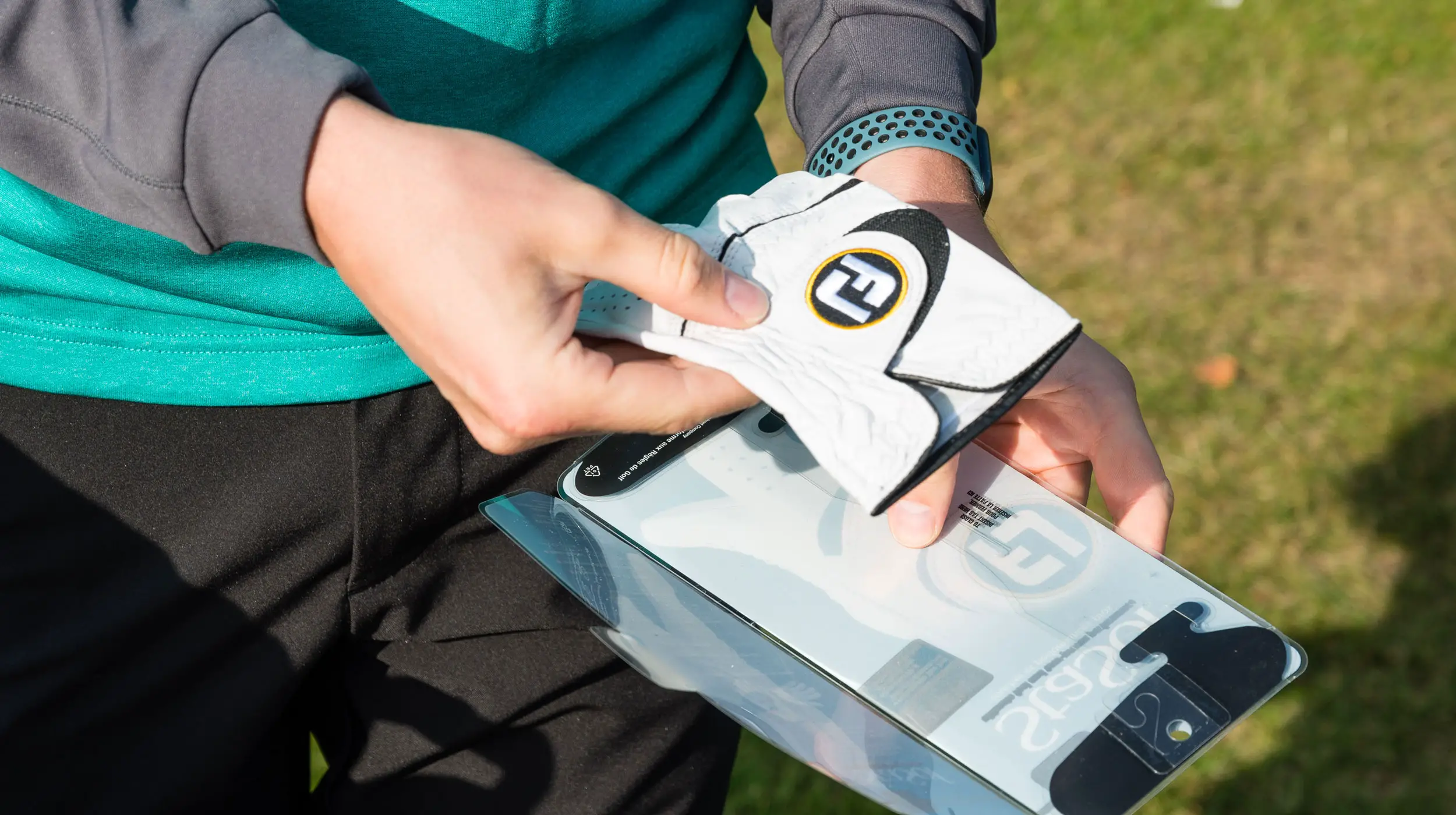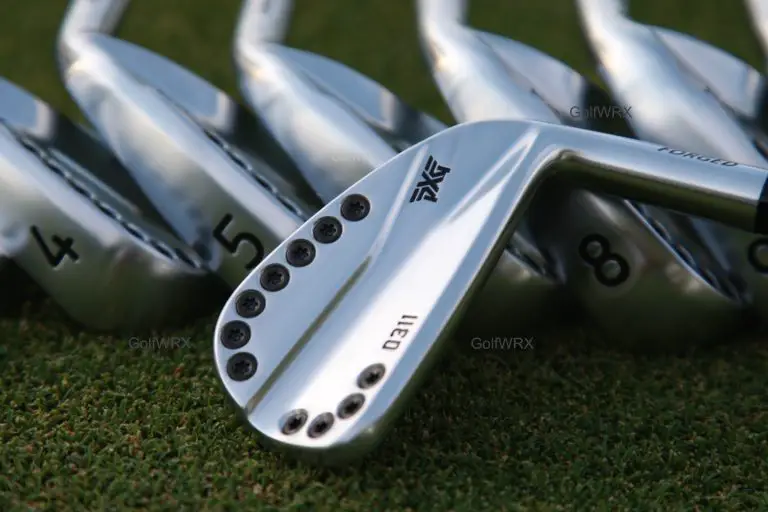Which Hand To Wear Golf Glove

Golf gloves, a staple accessory for golfers, serve a crucial purpose on the course. They enhance grip, provide comfort, and offer protection during swings. However, one common question that arises for golfers is: which hand should they wear their golf glove on? Selecting the appropriate hand to wear a golf glove requires careful consideration of various factors, including dominant hand, grip preference, and personal comfort. In this comprehensive guide, we will delve into the intricacies of choosing the correct hand for wearing a golf glove, providing valuable insights, tips, and considerations to help you make an informed decision.
The choice of which hand to wear a golf glove on has a direct impact on grip strength, control, and overall performance. While conventionally golfers wear the glove on their non-dominant hand, there are exceptions and variations based on individual preferences and playing styles. Understanding the advantages and considerations of wearing the glove on the non-dominant hand versus the dominant hand can assist golfers in finding the optimal solution that aligns with their unique needs.
Join us as we explore the factors to consider when determining which hand to wear a golf glove, practical tips for achieving the best fit, additional factors to enhance golf glove performance, and insightful discussions on individual preferences and comfort. By the end of this guide, you’ll be equipped with the knowledge and confidence to make an educated decision that will elevate your golfing experience and prowess on the fairways.

Determining the Correct Hand: Left or Right?
Determining the correct hand for wearing a golf glove is crucial to maximize its benefits. While some golfers wear the glove on their non-dominant hand, others prefer the glove on their dominant hand. The choice depends on individual factors and preferences. So, how can you determine the correct hand for wearing your golf glove? Let’s dive into the factors to consider.
When determining the correct hand for your golf glove, one crucial aspect to evaluate is your dominant hand. For right-handed golfers, the dominant hand is typically the right hand, while for left-handed golfers, it is the left hand. Your dominant hand plays a significant role in controlling the club and generating power during your swing. Wearing the glove on your non-dominant hand allows for a secure grip and enhances control over the club.
However, there are exceptions and variations based on individual preferences. Some right-handed golfers may choose to wear the glove on their dominant hand for various reasons. Similarly, left-handed golfers may opt to wear the glove on their right hand. The decision often comes down to personal comfort, feel, and the level of grip desired during the swing.
In the following sections, we will explore the advantages and considerations of wearing a golf glove on the non-dominant hand and the dominant hand, providing you with a comprehensive understanding to make an informed choice based on your unique requirements and playing style.
Wearing a Golf Glove on the Non-Dominant Hand
Wearing a golf glove on the non-dominant hand is the common practice among golfers. For right-handed golfers, this means wearing the glove on the left hand, and for left-handed golfers, it means wearing the glove on the right hand. Let’s explore the benefits and techniques associated with wearing a golf glove on the non-dominant hand.
One of the primary benefits of wearing a golf glove on the non-dominant hand is the enhanced grip it provides. The glove creates friction between your hand and the club, ensuring a secure connection throughout your swing. It helps prevent the club from slipping, especially during rainy or humid conditions when gripping the club firmly becomes challenging.
Additionally, wearing a glove on the non-dominant hand offers an increased level of comfort and protection. The glove acts as a barrier between your skin and the grip, reducing the risk of developing blisters or discomfort caused by repetitive rubbing or pressure.
To wear the golf glove on your non-dominant hand, follow these simple steps:
- Ensure your non-dominant hand is clean and dry.
- Insert your non-dominant hand into the glove, with the fingers reaching the end of the glove but not exceeding it.
- Adjust the closure or fastening mechanism to achieve a snug fit around your wrist.
- Double-check the fit to ensure it is comfortably secure, with ample flexibility for natural hand movements.
By wearing the golf glove on your non-dominant hand, you can maintain a consistent grip and enjoy the benefits of improved control, comfort, and protection throughout your golfing sessions.
In the next section, we will explore an alternative approach: wearing the golf glove on the dominant hand.
Wearing a Golf Glove on the Dominant Hand
While wearing a golf glove on the non-dominant hand is the standard practice, some golfers prefer to wear the glove on their dominant hand. This approach may seem unconventional, but it has its own set of advantages and considerations. Let’s dive into the details of wearing a golf glove on the dominant hand.
One primary reason some golfers choose to wear the glove on their dominant hand is the desire for a stronger grip. By wearing the glove on the hand that controls the swing’s power and accuracy, golfers aim to maximize control over the club and generate more consistent shots. This grip-centric approach emphasizes the importance of a secure connection between the dominant hand and the club.
Wearing the golf glove on the dominant hand can provide a heightened sense of feel and feedback during the swing. Golfers who prioritize the tactile sensation of their grip often prefer this approach. The glove acts as a thin layer of protection while still allowing direct contact with the club, facilitating a better sense of connection and control.
To wear the golf glove on your dominant hand, follow these steps:
- Clean and dry your dominant hand.
- Slide your dominant hand into the glove, ensuring the fingers reach the end comfortably.
- Adjust the closure or fastening mechanism to achieve a secure fit around your wrist.
- Verify that the glove fits snugly but does not restrict your hand’s range of motion or impede flexibility.
It’s important to note that wearing the golf glove on the dominant hand may require some adjustment and experimentation to find the optimal balance between grip strength, feel, and overall comfort. Golfers who choose this approach often emphasize the benefits of a tailored grip and the increased feedback they receive during their swings.
In the next section, we will discuss additional considerations for individual preference and comfort in determining which hand to wear a golf glove.
Considerations for Individual Preference and Comfort
When it comes to selecting which hand to wear a golf glove, individual preference and comfort play significant roles. Golfers have unique characteristics, playing styles, and physical attributes that may influence their choice. In this section, we will explore additional factors to consider to ensure the optimal fit and functionality of your golf glove.
- Hand Size: The size of your hands can impact the fit and performance of the golf glove. Golf gloves are available in various sizes, typically ranging from small to extra-large. It’s crucial to measure your hand size accurately to select the appropriate glove size. A well-fitted glove should provide a snug yet comfortable fit, allowing for natural hand movements.
- Dexterity: Consider your hand’s dexterity when deciding which hand to wear the golf glove on. The non-dominant hand often exhibits greater dexterity, making it well-suited for tasks that require precision and control. By wearing the glove on the non-dominant hand, you can harness the enhanced dexterity of that hand while still benefiting from the added grip and protection provided by the glove.
- Sensitivity: Some golfers may have greater sensitivity in one hand compared to the other. If you have a hand that is more prone to blisters or discomfort, wearing the glove on that hand can offer additional protection and alleviate potential issues during prolonged practice sessions or rounds of golf.
It’s worth noting that personal preference and experimentation play significant roles in determining which hand to wear a golf glove. As a golfer, you should feel comfortable and confident in your choice, ensuring that it enhances your grip, control, and overall enjoyment of the game.
In the following sections, we will provide practical tips and guidelines for achieving the best fit for your golf glove, as well as explore additional factors that can enhance golf glove performance.
Tips for Proper Golf Glove Fit
Ensuring a proper fit for your golf glove is crucial to optimize its performance and effectiveness on the course. A well-fitted glove provides enhanced grip, comfort, and control, allowing you to focus on your swing without distractions. Here are some tips to help you achieve the best fit for your golf glove:
- Measure your hand: Before purchasing a golf glove, measure your hand to determine the appropriate glove size. This involves measuring the circumference of your hand, just above the thumb. Consult the sizing chart provided by the glove manufacturer to select the correct size.
- Snug but not tight: A golf glove should fit snugly on your hand, but not excessively tight. It should allow for natural movements and flexibility while providing a secure grip. Avoid gloves that are too loose, as they can affect your grip and compromise control over the club.
- Check finger length: The fingers of the glove should extend to the base of your fingers without exceeding them. Excessively long fingers can impede your grip, while short fingers may restrict movement and feel uncomfortable.
- Closure mechanism: Many golf gloves feature a closure mechanism, such as a hook-and-loop strap or a snap button, to ensure a secure fit around the wrist. Adjust the closure according to your preference, ensuring it provides a comfortable and firm hold without causing discomfort or restricting blood circulation.
By following these tips, you can achieve an optimal fit for your golf glove, facilitating improved grip, control, and overall performance on the golf course.
In the next section, we will explore additional factors that can enhance your golf glove experience, including double gloves, weather considerations, and maintenance tips.
Additional Factors to Enhance Golf Glove Performance
Beyond selecting the correct hand and achieving a proper fit, there are additional factors to consider to further enhance your golf glove performance. These factors can make a noticeable difference in your comfort, grip, and overall experience on the golf course.
Double Gloves for Added Grip and Protection
For golfers who desire maximum grip and enhanced protection, wearing two gloves is an option worth considering. Known as “double-gloving,” this technique involves wearing a glove on both hands. The primary hand wearing the golf glove remains consistent based on your preference (non-dominant or dominant hand), while the other hand wears a lighter glove, typically referred to as a “rain glove.”
The rain glove is thinner and provides increased feel and control over the club. It is designed to excel in wet or humid conditions, maintaining grip even when the hands are damp. By pairing a rain glove with your primary golf glove, you can achieve an extra layer of grip and protection, especially in inclement weather.
Weather Conditions and Glove Material
Considering the weather conditions you typically encounter while playing golf can help you choose the most appropriate glove material. Golf gloves are available in various materials, including leather, synthetic materials, and hybrid combinations. Each material offers different advantages and considerations:
- Leather gloves: Leather gloves are known for their softness, durability, and excellent grip. They conform to your hand over time, providing a customized fit and feel. However, leather gloves may require more maintenance and care to prevent deterioration due to moisture or excessive use.
- Synthetic gloves: Synthetic gloves are typically more affordable, lightweight, and resistant to moisture. They often offer good breathability and durability, making them suitable for various weather conditions. Additionally, synthetic gloves tend to be easier to clean and maintain.
- Hybrid gloves: Hybrid gloves combine elements of both leather and synthetic materials, offering a balance of comfort, grip, and durability. They provide the benefits of both materials and are a popular choice among golfers seeking a versatile option.
By considering the prevailing weather conditions during your rounds of golf and selecting a glove material suitable for those conditions, you can enhance your grip, comfort, and overall performance on the course.
Maintenance and Care Tips
Proper maintenance and care of your golf gloves can prolong their lifespan and ensure optimal performance. Here are some practical tips to keep your gloves in excellent condition:
- Cleaning: Regularly clean your golf gloves to remove dirt, sweat, and other debris that can accumulate over time. Follow the manufacturer’s instructions for cleaning, which may involve hand washing with mild soap and water. Avoid using harsh chemicals or excessive force that may damage the glove’s material.
- Drying: After cleaning or playing in wet conditions, allow your gloves to air dry naturally. Avoid exposing them to direct heat sources, such as radiators or dryers, as high temperatures can cause the materials to warp or shrink.
- Rotation: It’s beneficial to rotate multiple pairs of golf gloves during your rounds. This allows each glove to have ample time to dry and recover its shape before its next use, preventing excessive wear and tear.
- Storage: Proper storage of your golf gloves is essential to maintain their shape and integrity. Store them in a cool, dry place away from direct sunlight, which can cause fading or damage. Consider using glove keepers or inserts to preserve their form when not in use.
By following these maintenance and care tips, you can prolong the lifespan of your golf gloves and ensure they continue to provide excellent grip and comfort throughout your golfing endeavors.
Note: The content provided in this article is intended for informational purposes only. Individual preferences and requirements may vary. It is always advisable to consult with a golf professional or expert for personalized guidance and recommendations.
Conclusion
Selecting the correct hand for wearing a golf glove is a personal decision that depends on various factors, including dominant hand, grip preference, and personal comfort. While the non-dominant hand is traditionally chosen by most golfers, some prefer to wear the glove on their dominant hand for specific advantages. By considering individual preferences, hand size, dexterity, and sensitivity, golfers can make an informed choice that optimizes grip, control, and overall comfort on the golf course.
Achieving a proper fit for your golf glove is crucial, and it is recommended to measure your hand accurately and select the appropriate glove size. Experimentation and personal preference play key roles in determining the most comfortable option. Additionally, factors such as wearing double gloves for added grip and protection, considering weather conditions and glove materials, and practicing proper maintenance and care can further enhance your golf glove experience.
Remember, the ultimate goal is to find the hand and glove combination that allows you to focus on your swing and enjoy the game to the fullest. So, whether you choose to wear the golf glove on your non-dominant hand or dominant hand, make sure it feels comfortable, provides a secure grip, and enhances your overall performance on the golf course. Happy golfing!






